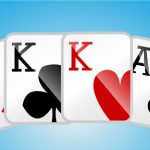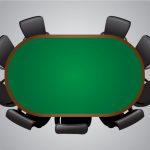Disclaimer: This series is going be quite long, there is a lot to digest and I don’t intend that you read it all in one go. It’s probably best to read it in several short sections. To help you, I am splitting the guide into several smaller threads, which will be posted in due course. The hands used in this post are real hands I have been involved in. I have sometimes taken a little artistic license and changed some of the specifics to illustrate the point a bit clearer, but usually the hands are unedited. I am intentionally vague in some of the later sections. I would say it’s impossible to write a guide that says “do this when you have AKs etc.” because this depends to a greater or lesser extent on the table specifics, such as stack sizes and opponent tendencies. Rather, I have chosen to write about things I consider when I make decisions.
I have written this post as a guide to ‘Double or Nothing’ tournaments (DONs). DON tournaments are usually single table sit-and-go tournaments where half the field doubles up and the rest go home with nothing. If you are unfamiliar with the basics of these tournaments, I highly recommend you read Kevster’s Introduction to Double or Nothings, which gives a great general introduction.
If you are wondering about my credentials, I don’t pretend to be an excellent DON player, but I do have extensive experience at the $5 and $10 levels, where I have been a consistent winner over thousands of tournaments. This guide is based primarily on my experiences at $5.20 and $10.40 DON turbo tables on ACR Poker.
Throughout this article, I’m going to talk consistently about fold equity. When I talk about fold equity, this is what I mean. "Pot equity is your share of the pot if the pot were to go to show-down, without any further betting. Fold equity is the forfeited pot equity" – Kill Everyone by Nelson, Streib and Lee.
An example
ACR Poker No-Limit Hold’em, 10.4 Tournament, 25/50 Blinds 5 Ante (9 handed) – ACR Poker Converter Tool from FlopTurnRiver.com
MP3 (t1895)
CO (t710)
Button (t1340)
SB (t2000)
BB (t1420)
UTG (t1515)
Hero (UTG+1) (t1470)
MP1 (t2940)
MP2 (t1710)
Hero’s M: 12.25
Preflop: Hero is UTG+1 with K  , A
, A  , Villain is in BB with K
, Villain is in BB with K  , Q
, Q 
1 fold, Hero bets t150, 6 folds, BB calls t100
Flop: (t370) A  , 3
, 3  , 4
, 4  (2 players)
(2 players)
You have top pair versus a flush draw. The villain has 37% of the pot equity. In other words, if the hand were to get to showdown, he would win 37% of the time. If you bet enough to make to make calling unprofitable for the villain, he may fold his hand and your pot equity increases from 63% to 100%.
The bigger your stack is, the greater your fold equity is. Maintaining a healthy stack size is vital in DON as the flat payout structure tends to punish people who call widely on the bubble. However, in order to encourage opponents to fold, you need to maintain a stack with sufficient fold equity. The more chips you have, the better off you will be.
The concept of preserving chips encourages me to play very tightly in the early stages of double or nothings. I am less concerned with winning pots than keeping pots small without the nuts. I will tend to lead out hands like TPTK and two-pair. If I am in position and there is action ahead of me, I will usually call behind and re-evaluate the turn/river. If I am out of position, I may check-call the flop and further streets depending on my hand quality and the board texture. I make a lot of chips by checking the river and allowing my opponents to bluff with hands they feel are ahead.
Hand 1
ACR Poker No-Limit Hold’em, 10.4 Tournament, 15/30 Blinds (9 handed) – ACR Poker Converter Tool from FlopTurnRiver.com
BB (t1360)
UTG (t1695)
UTG+1 (t1390)
MP1 (t3280)
MP2 (t1080)
MP3 (t680)
CO (t2590)
Button (t1455)
Hero (SB) (t1470)
Hero’s M: 32.67
Preflop: Hero is SB with A  , J
, J 
UTG calls t30, UTG+1 calls t30, 4 folds, Button calls t30, Hero calls t15, BB checks
Flop: (t150) 10  , J
, J  , 4
, 4  (5 players)
(5 players)
Hero checks, BB checks, UTG bets t30, UTG+1 raises to t120, 1 fold, Hero folds.
Although Hero has TPTK here, the board texture is poor so he checks the flop and waits to observe the action. After a raise and a reraise, the villains are announcing they have hands they like and want to play. Hero should fold since UTG could squeeze him, the number of player involved in the pot in concerning and 120 chips is unlikely to all the chips he will risk in the hand. Remember, risking those chips is bad for maintaining your fold equity.
Before we start discussing strategy and analysing hands, here are a few things to consider before you hit the tables.
MULTI-TABLING
DONs offer a fantastic opportunity for multi-tabling, probably more so than any other form of poker, since the decisions are relatively simple and rarely go beyond the flop. They also have an inherent advantage over multi-tabling normal SnG’s in that there are always 6+ people at the table, which means the period between hands is usually longer.
- Important considerations
-You shouldn’t be risking more than 10% of your bankroll when you multi-table e.g. you should not be playing more than 10 $10 tables if you have a bankroll of $1000. The reason for this is very simple. If your ISP or the poker-site goes down and you sit out on all tables, you could potentially lose more than 10% or your roll if you are over-extending yourself.
– Consider running a stack instead of tiling. It allows you to play many more tables at once. You can find the code in the Beginner’s Guide to Multi-tabling by Nakamura and Rage2100
– Do not try to jump in and multi-table 15-tables. I have gradually built up my stack size and multi-tabling experience. Add 1 or 2 tables at once and see how you cope before adding more.
– Variance, one set = one data-point. Don’t think that because you have played 15 games you have 15 data points. You don’t. What you have is what statisticians call pseudo-replication. In other words the tournaments are not actually independent of each other. Perhaps you were a bit sleepy or maybe your girlfriend left you last week? Your play is affected in the same way in all tables in one set and should therefore be treated as one data-point. You can start drawing conclusions at roughly 30 data-points, before that there is usually too much variance to say anything meaningful. If you are multi-tabling 10 tables, that means you need have 300 DONs under your belt before you can even start to consider what your ROI is.
AVOIDING THE GOOD PLAYERS
This is generally pretty self-explanatory. Where possible you should try to avoid the good players. If you see a good regular already registered in the tournament lobby, you should wait a few minutes and join another table. Also try to avoid registering for tournaments where there are several tables that have 4 or 5 players registered. This may mean there are too many regulars on these tables and not enough fish to spread the wealth around.
Personally, I don’t exercise this kind of table selection as I actually enjoy playing against most regulars. I usually have a good idea of how they play and if they sit to my left they usually ‘get’ that they can’t call wide in these spots. I know I can push very wide into them and it’s an easy way to stay afloat in a DON.
VARIANCE AND WHAT IT MEANS FOR YOUR BANKROLL
Although variance is probably lower in DONs, since the result is binary; either you lose or a double of your stake, most likely around 50% of the time, there is still considerable variance. Two months ago I made over $1000 at DON tables but I dropped at least 15 BI 3 times. Be properly rolled. I suggest at least 25-30 if you are a recreational player and at least 50-60 if you are a professional player. Being properly rolled will allow you to bring a fearless game to the table and give you an edge over timid, under-rolled opponents. Consider downloading this Excel spreadsheet and playing around with Hero’s edge.
TO TURBO OR NOT TO TURBO
Should you play turbos or normals? To a certain extent, this is personal preference. Off the top of my head, here are a few things you should consider.
The rake in the turbos is half that of the normal-speeds. If you choose to play the normal-speeds, you will need to overcome this extra rake. Turbos will generally be much quicker and allow you to play more tournaments in the same time period. On the other hand, there will be less time before blind increases and therefore you will have to push more marginal hands in turbos. Consequentially there is generally a trade off that means you trade a lower ROI for higher volume.
RUNNING A HUD
A HUD or Heads Up Display is a graphical interface that overlies a table and provides an indication of how opponents play. The two main tracking softwares are Hold ‘em Manager and Poker Tracker. If you are serious about DONs, I seriously recommend running a HUD. They are especially useful if you are multi-tabling.
Here is my design. The top row in my HUD indicates how aggressive a player is, the second row indicates how often opponents steal the blinds and how often they call when they are in the blinds. Since I have started using the stats in the second row I have noticed a big difference in my game.
VPIP / PFR / AF / Hands
Steal / Call in BB / Call in SB
Submit your review | |







